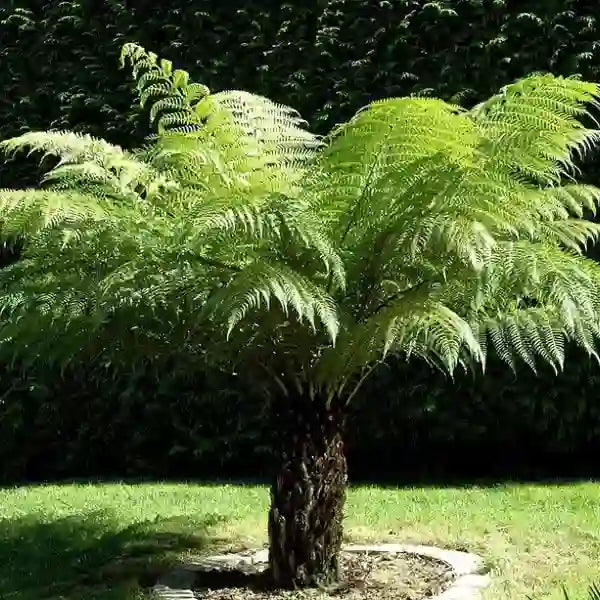
Man fern (Dicksonia Antarctica )
Selling Size : Single Plant | Pot Included | Secure Packing | Free Delivery
The Man Fern, or Dicksonia antarctica, is a beautiful and dramatic tree fern native to the temperate rainforests of southeastern Australia and Tasmania. With a little care, it can thrive in a variety of garden settings and even as a container plant.
Here's a comprehensive guide to caring for Man fern (Dicksonia Antarctica ) :
Light and Location
Shade is key: Man ferns prefer a sheltered, shady spot with dappled or filtered light. Direct, intense sunlight will scorch their delicate fronds, leading to browning and stress.
Protection from wind: The long, arching fronds are susceptible to wind damage. Plant your fern in a location protected from strong winds. A spot near a house, under a tree canopy, or in a sheltered garden corner is ideal.
Humid environment: These ferns thrive in high humidity. Placing them near a pond, water feature, or in a location that stays naturally moist can be beneficial.
Watering and Humidity
Keep it moist: The most crucial aspect of Man Fern care is consistent moisture. The fibrous trunk is actually a dense network of roots and needs to be kept damp at all times.
Water the crown and trunk: Don't just water the soil at the base. Pour water directly into the "crown" (the top of the trunk where the fronds emerge) and down the trunk itself. This is how the fern absorbs water and nutrients. During hot, dry periods, you may need to do this daily.
Soil moisture: The soil around the base should also be kept moist but not soggy. A good way to check is to feel the top 1-2 inches of soil; if it's dry, it's time to water.
Humidity boost: For container plants, or in drier climates, you can increase humidity by placing the pot on a tray of pebbles filled with water, or by using a humidifier.
Soil and Feeding
Rich, well-draining soil: Man ferns thrive in loose, organically rich, and humusy soil. Amend the soil with plenty of organic matter like garden compost or leaf mulch before planting.
Slightly acidic soil: They prefer a neutral to slightly acidic pH, typically between 5.5 and 6.5.
Fertilizing: Most ferns planted in the garden don't need much feeding. However, for a boost, you can apply a balanced, water-soluble fertilizer to the trunk and fronds once a month from mid-spring to mid-summer during the growing season. Alternatively, a slow-release granular fertilizer can be spread around the base in the spring.
Winter Protection
Cold hardiness: Man ferns can tolerate some cold, but they are not fully hardy in all climates. They are generally suited for USDA Zones 9-10.
Protect the crown: In areas with frost or cold winters, you must protect the crown. You can stuff the crown with straw or bracken, or fold the fern's own fronds inwards to provide insulation.
Wrapping the trunk: Wrapping the trunk with horticultural fleece or bubble wrap can also provide protection. Remember to remove the wrapping in the spring before new fronds emerge.
Container plants: For young or container-grown ferns, the safest option is to move them to a sheltered, frost-free location like a greenhouse or conservatory for the winter.
Pruning and Maintenance
Remove dead fronds: Simply snip off any old, dead, or yellowing fronds at the base. It is best to do this in the spring before new fronds (crosiers) start to emerge.
Allow old fronds to hang down: In nature, old fronds hang down and hold humidity near the trunk. Some gardeners prefer to let them hang, while others snip them off for a tidier look. Either method is fine.
Watch for pests: Man ferns are generally pest-free, but keep an eye out for common pests like mealybugs and aphids, especially on indoor or greenhouse plants.

